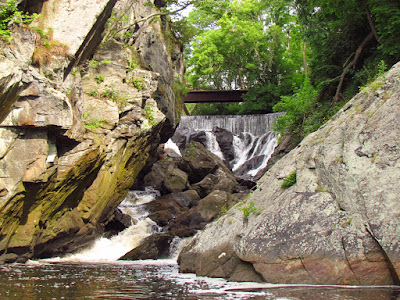The tide is high when we get there. J, a professional fishing guide that I frequently furn into at the launch is there practicing his casting. As JR and I paddle off up the Neck River I tell her that it's weird that J doesn't know much about birds, but then again, I don't know anything about fish.
JR keeps leaves her camera in my waterproof pack...thinking that she would prefer to soak it all in rather than interrupt the experience with the camera. We talk about this for a few minutes as I often skip over good photo opportunities because the moment is just too rich to gum up.
As we paddle I teach Salt Marsh 101, with brief lessons about Willets and Ospreys. Osprey young are showing themselves in the nests. Their not big or bold enough to be up standing on the edges of the nests, but they are putting their fuzzy heads up high enough to look around. The Willets are doing their usual thing, warning others as we near and scolding us. They should have young in their invisible nests.
 |
| Oyster boat working the East River |
 |
| Old Dams 101, and Introductory Course |
I take JR on one short side trip up to the old sawmill dam. I teach Old Dams 101...Connecticut is good for a full degree in Old Dams, but this one is a good introduction, built in the 1850's, a low efficiency undershot design that could only function seasonally as its water supply is a trickle of a stream that can be easily stepped over without getting ones feet wet.
And we paddle on, talking about art, art projects, and art problems, and catching up on a year that has passed since last seeing each other. It is something that the canoe does exceptionally well.










































